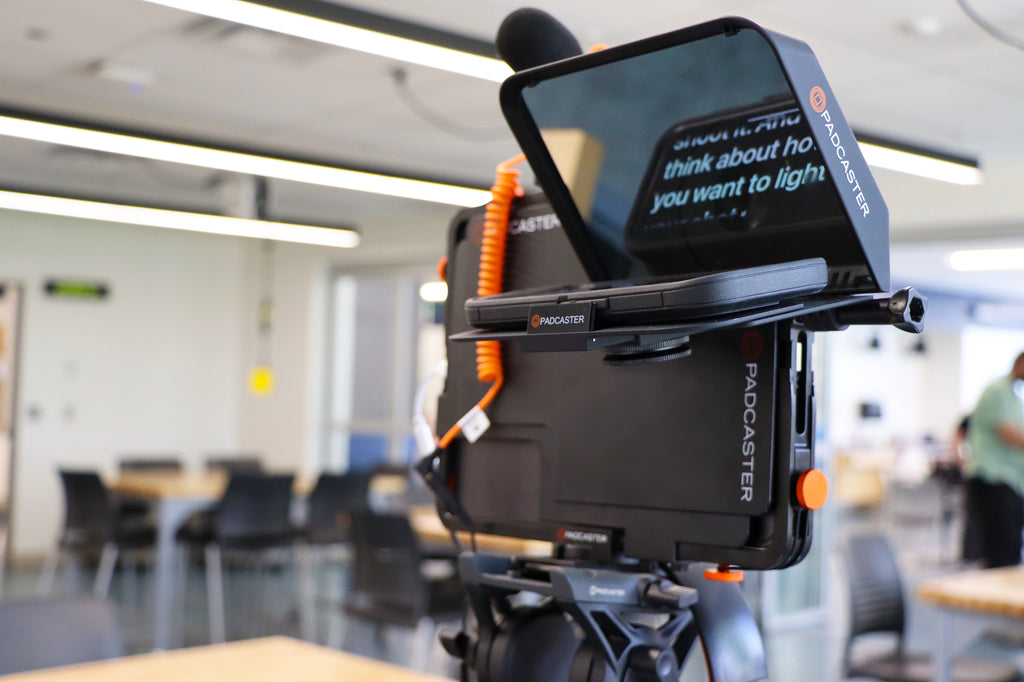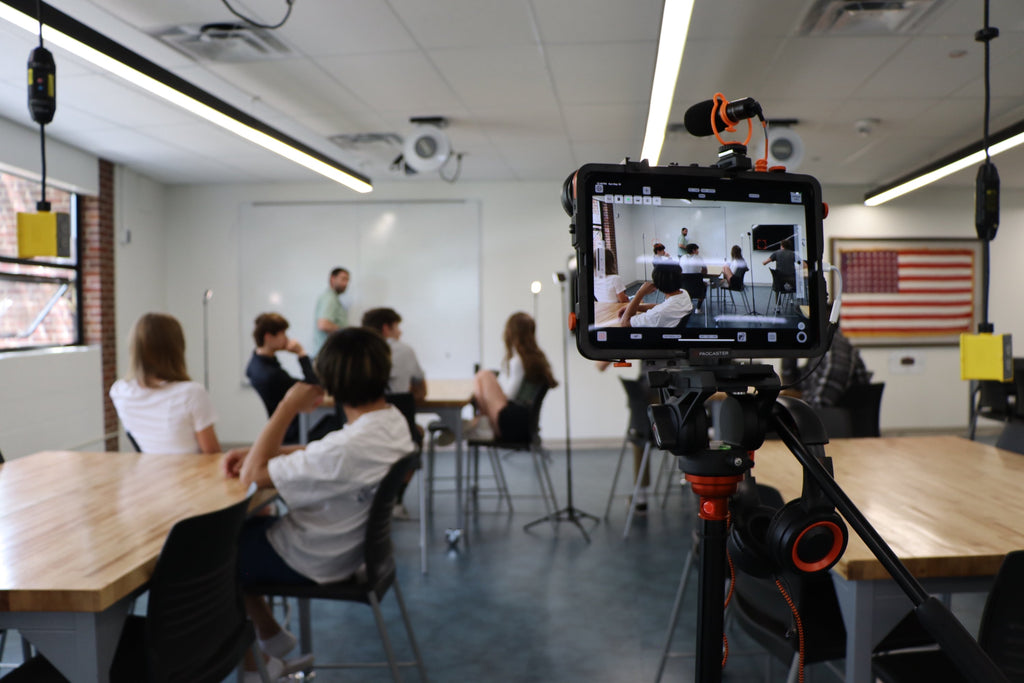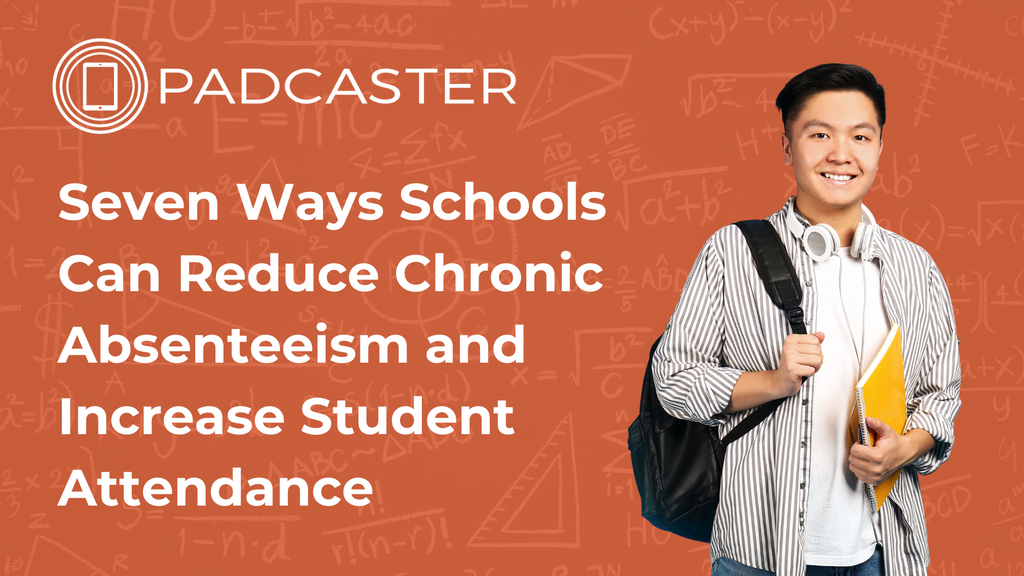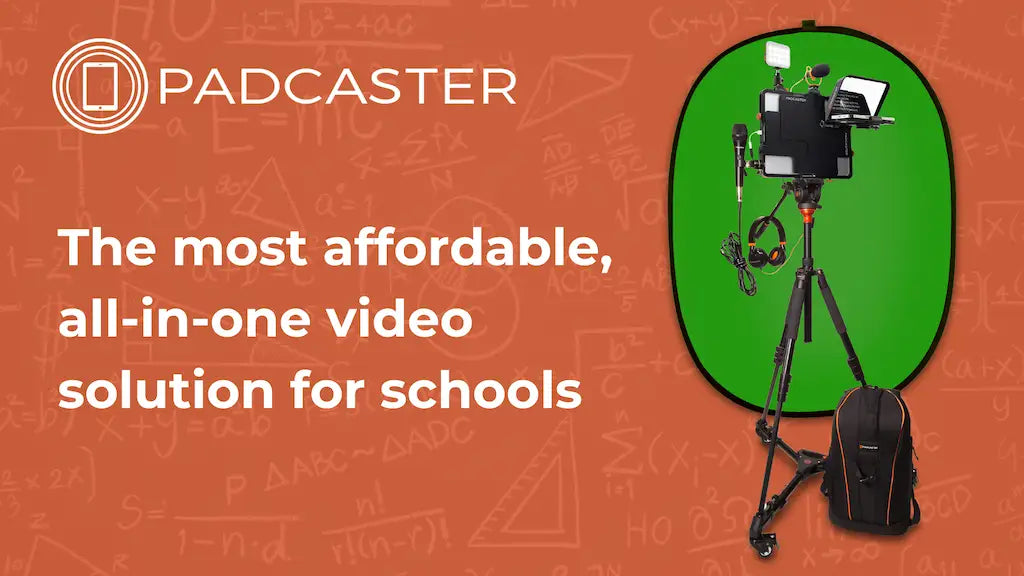
Key takeaways
- Learning loss happens when students lose knowledge/skills or fall behind.
- Learning loss can happen because of disruptions, school breaks, chronic absences or due to social, emotional or economic situations.
- Video learning helps teachers address learning loss because students can learn at their own pace, and it combines visual and audio in one.
- Teachers can address learning loss with video-based learning solutions to record lessons and tutorials and engage students in creative assignments that make learning fun.
- Teachers can share best practices with each other by recording themselves in action.
- Padcaster is the most affordable all-in-one video solution for schools.
How Teachers Can Use Video Learning to Combat Learning Loss
Learning loss is when students lose knowledge or skills or are behind pace of where they should be in their academic progression. Post-pandemic, too many U.S. elementary and middle school students remain behind.
When students fall behind in learning, that can haunt them down the road if they drop out or lack the skills they need to get good-paying jobs or continue their education. That hurts them and society at large.
Understanding the Causes of Learning Loss
Multiple factors can cause learning loss, including disruptions in the school year due to extreme weather or surprise events like a global pandemic. School breaks like summer vacation are known to cause the “summer slide.” Chronic absences can also play a role, making it difficult for students to catch up. Other issues outside of school, like poverty, trauma, mental illness or homelessness can also play a role in making it difficult for students to learn or get caught up.
Why Video Learning Should Be a Top Learning-Loss Solution in Your Classroom
Video helps students learn because it combines visual and audio information. With video, teachers can show instead of just tell. Video encourages teachers to be clear and concise and edit themselves for the information necessary to share.
Here’s what research shows about the benefits of video-based learning for students:
- Videos allow students to self-pace, so they can pause or rewind as needed for their comprehension.
- Video-based learning helped students increase their average grades from a B to a B+.
- When video-based learning was combined with traditional in-person learning, the average student scores increased from Bs to As.
- Closed captioning on videos can especially help second-language learning.
Video-learning Strategies Teachers Can Implement to Address Learning Loss
Teachers are no strangers to creative problem-solving. Implementing video-based learning is simply a new creative challenge. Here are some thought-starters.
Focus on the Essentials: Math and Reading
Students’ math and reading skills were the hardest hit during the pandemic. Use video to help students in the classroom and at home.
- Early math learners
- Use video to record critical, foundational concepts like basic addition and subtraction. With video, you can make math visual and concrete, using real objects to show items added and taken away.
- Students can then rewatch these videos again and again, until they’ve got it and can move on to the next concept.
- Elementary and middle school readers
- Nearly 30% of kids want to be YouTubers. Tap into that desire while improving their reading skills with a teleprompter.
- Create a script for younger students or have older students write their own scripts on a topic of their choice.
- Give students a chance to practice their reading skills with the teleprompter; start out on the slowest speed and increase speed as they gain confidence.
Record Tutorials for Extra Personalized Support
Helping students one on one is one of the joys of teaching, but it can be challenging to find enough time to give every student the attention they need. This is especially true in middle and high school, when students move from class to class throughout their days.
Teachers can create specialized video tutorials for students who need more one-on-one support. This way, the student can review the information in their own time as many times as they need and then come to class with questions and discussion points for the teacher.
This is a similar approach to a flipped classroom, which has been shown to improve student outcomes and engagement.
Teaching the Teachers at Scale and Through Collaboration
Teachers are life-long learners and some of the best information-sharers around. Schools and school districts can use both to their advantage with video. Here’s how.
- Identify top teachers who excel at helping students combat learning loss.
- Record them in their classrooms so other teachers can learn from them firsthand.
- Share those videos across the school and school district.
- Encourage other teachers to collaborate and record their own successful learning-loss solutions.
Turn to Padcaster, the Most Affordable Video-based Learning-Loss Solution for Schools
Padcaster helps teachers combat learning loss easily and affordably with video-based learning.
- Convert any iPad or tablet into a professional-grade video-production studio with our all-in-one kit.
- Our lightweight, intuitive and rugged design makes creating videos simple.
- Our growing library of tutorials helps any teacher of any video skillset get up to speed quickly.
- The Padcaster Studio is more affordable than building your own kit or using professional equipment. Save hundreds to thousands of dollars on video equipment with Padcaster.
Learn more, shop the Studio or get a quote today.
Need More Information?
Fill out the form here to get in touch with a member of the Padcaster Team.

